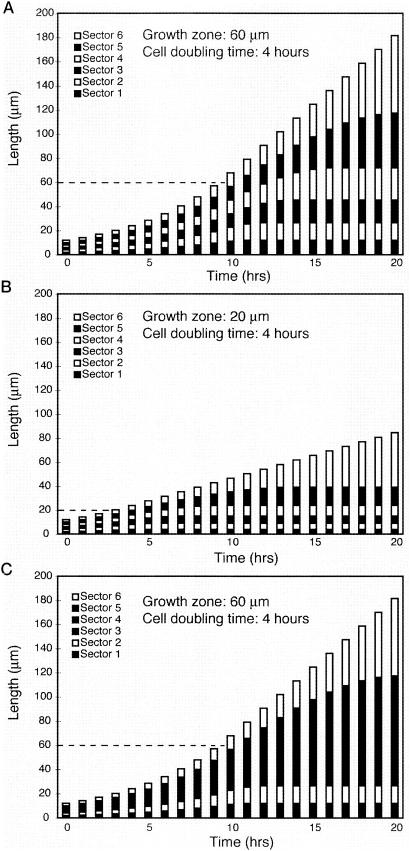FIG. 6.
Model of infection thread growth. (A). A computer model was used to simulate sectored infection thread growth. For these cases, it was assumed that the thread started with six alternating bright and dark sectors of equal size. The doubling time for the growing bacteria (those 60 μm or less from the growing tip of the thread) was 4 h. Each bar is a representation of the length of the thread and its six sectors at each time point. Growth of the thread is exponential until it reaches 60 μm in length (dashed line) and becomes linear thereafter. Once the tipmost sector is more than 60 μm in length, it will be the only sector which continues to increase in size (see the last bar as an example). (B) Same as panel A, except the size of the growth zone is 20 μm. The thread grows at the same rate as for panel A while the thread is less than 20 μm long. After that, only cells in the tipmost 20 μm contribute to subsequent growth, and the overall rate of thread extension is lower than in the case where the growth zone is 60 μm long. (C). Same as panel A, except bacteria entering the thread are not assumed to have strictly alternated in terms of fluorescence. The entry pattern shown was dark-light-dark-dark-dark-light. This gives a total of four sectors, with the large dark sector in the middle of the thread having arisen from the loading of three dark cells in a row.

